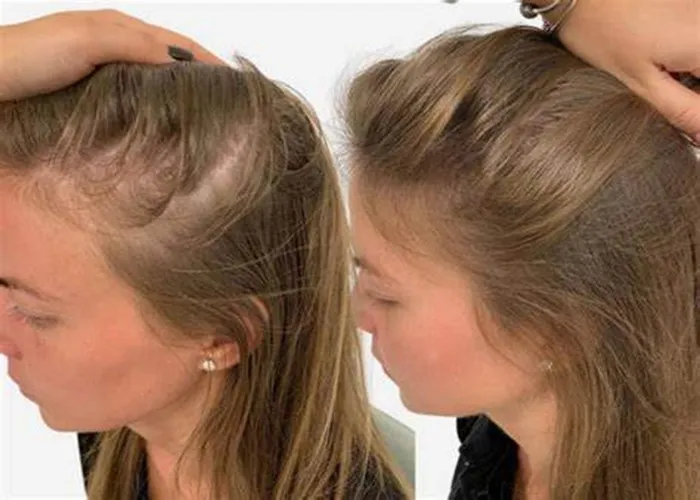In the ever – evolving landscape of hair restoration, the ARTAS hair transplant system has emerged as a revolutionary solution for individuals grappling with hair loss. Developed by Restoration Robotics, the ARTAS system uses advanced robotics and artificial intelligence to perform follicular unit extraction (FUE) hair transplant procedures with remarkable precision. This article explores the results that patients can expect from an ARTAS hair transplant, covering various aspects such as follicular unit survival, natural – looking appearance, and long – term outcomes.
High Follicular Unit Survival Rate
Precision in Extraction
One of the primary reasons for the high success rate of ARTAS hair transplants is the system’s precision in follicular unit extraction. The ARTAS system uses high – resolution imaging to create a detailed 3D map of the scalp. This allows the robotic arm to identify and extract individual follicular units with an accuracy of up to 0.1 mm. By minimizing damage to the follicles during extraction, the ARTAS system significantly increases their chances of survival after transplantation. In traditional FUE procedures, human error can sometimes lead to follicular damage, reducing the overall survival rate. With ARTAS, the consistent and accurate extraction process ensures that a higher percentage of follicles remain viable for transplantation.
Minimized Trauma to Follicles
The robotic arm of the ARTAS system is designed to extract follicular units with minimal trauma to the surrounding tissue. The system can control the depth and angle of the extraction punch, preventing unnecessary damage to the follicles. This gentle extraction process not only improves the survival rate of the follicles but also reduces post – operative discomfort for the patient. The reduced trauma to the scalp also promotes faster healing, further contributing to the overall success of the transplant.
Natural – Looking Results
Mimicking Natural Hair Growth Patterns
The ARTAS system’s ability to precisely place follicular units in the recipient area is crucial for achieving natural – looking results. The software analyzes the natural hair growth pattern of the patient’s scalp and uses this information to guide the robotic arm during the implantation process. The follicles are implanted at the correct angle and density, mimicking the natural growth pattern of the hair. This results in a seamless blend between the transplanted hair and the existing hair, creating a natural – looking hairline. In contrast, traditional hair transplant methods may not always be able to achieve such a precise and natural – looking hairline, especially in cases where the surgeon’s manual placement of follicles is less accurate.
Customized Treatment Plans
Each patient’s hair loss pattern is unique, and the ARTAS system allows for customized treatment plans. The system’s software can analyze the patient’s scalp and hair characteristics to determine the optimal number and location of follicular units to be transplanted. This personalized approach ensures that the final result is tailored to the patient’s specific needs and goals, resulting in a more natural and satisfying outcome.
Effective for Various Hair Loss Conditions
Androgenetic Alopecia
Androgenetic alopecia, also known as male – pattern or female – pattern baldness, is the most common cause of hair loss. The ARTAS hair transplant system has proven to be highly effective in treating androgenetic alopecia. The system can transplant a large number of follicular units in a single session, allowing for significant coverage of the affected areas. Whether it’s a receding hairline, thinning at the crown, or overall hair loss, the ARTAS system can help restore the patient’s hair density and improve their appearance.
Scarring Alopecia
Scarring alopecia is a type of hair loss that results from damage to the hair follicles due to scarring. The ARTAS system can be used to transplant healthy follicular units to the scarred areas, effectively covering the scars and restoring hair growth. The precision of the ARTAS system is particularly beneficial in these cases, as it allows for careful placement of follicles in the scarred tissue, maximizing the chances of successful transplantation.
Long – Term Results
Durability of Transplanted Hair
The hair follicles transplanted during an ARTAS hair transplant are typically taken from the donor area, which is genetically resistant to the hormones that cause hair loss. This means that the transplanted hair is likely to remain healthy and continue growing for the long term. Many patients report that the results of their ARTAS hair transplant last for decades, providing a permanent solution to their hair loss problem. The high follicular unit survival rate and the natural – looking results of the ARTAS system contribute to its long – term effectiveness.
Maintenance and Follow – Up
While the transplanted hair is generally long – lasting, proper maintenance and follow – up are still important. Patients are advised to follow a healthy lifestyle, including a balanced diet, regular exercise, and good scalp care. Regular follow – up appointments with the hair transplant specialist can help monitor the progress of the transplant and address any potential issues.
Conclusion
The ARTAS hair transplant system offers a range of impressive results for patients dealing with hair loss. From high follicular unit survival rates and natural – looking results to long – term effectiveness and suitability for various hair loss conditions, the ARTAS system has revolutionized the field of hair restoration. By leveraging advanced robotics and artificial intelligence, the ARTAS system provides a level of precision and consistency that is difficult to achieve with traditional hair transplant methods. For those considering a hair transplant, the ARTAS system is a viable option that can deliver satisfying and long – lasting results.
Related topics:
- Artas Cost Per Graft: A Comprehensive Guide
- ARTAS Robotic FUE: Procedure, Benefits & Cost
- ARTAS FUE Hair Transplant: A Solution for Hair Restoration


